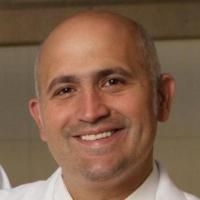Sleep disturbance, dyspnea, and anxiety following total joint arthroplasty: an observational study.
Date
2022-08-19
Journal Title
Journal ISSN
Volume Title
Repository Usage Stats
views
downloads
Citation Stats
Abstract
Background
Patient-Reported Outcomes Measurement Information System (PROMIS) domains for sleep disturbance, anxiety, and dyspnea have been under-reported for total joint arthroplasty (TJA). The aims of this study were to report postoperative differences for these domains based on TJA location and chronic pain state. We also investigated whether these domains were associated with physical function and pain interference outcomes.Methods
This was a retrospective, observational study of patients who underwent hip, knee, or shoulder TJA (primary and revision surgeries) at a single academic tertiary referral center. A subset of these patients completed an email-based survey for chronic pain grade (Chronic Pain Grade Scale-Revised) and sleep disturbance, anxiety, dyspnea, physical function, and pain interference (PROMIS short forms). Pre-operative and operative data were extracted from the electronic health record. Data analysis investigated PROMIS domains for differences in TJA location and chronic pain grade. Hierarchical linear regression determined associations of these domains with physical function and pain interference.Results
A total of 2638 individuals provided informed consent and completed the email survey. In the ANOVA models for sleep disturbance, anxiety, and dyspnea, there was no location by chronic pain grade interaction (p > 0.05) and no difference based on TJA location (p > 0.05). There were differences for chronic pain grade (p < 0.01). The poorest postoperative outcome score for each domain was associated with high impact chronic pain. Furthermore, sleep disturbance and dyspnea had the strongest associations with physical function and pain interference (p < 0.01).Conclusions
Sleep disturbance, anxiety, and dyspnea did not vary based on TJA location, but were associated with postoperative chronic pain grade. Sleep disturbance and dyspnea were strongly associated with commonly reported outcomes of physical function and pain interference. These findings provide guidance for those interested in expanding TJA outcome assessment to include sleep disturbance, anxiety, and/or dyspnea.Type
Department
Description
Provenance
Citation
Permalink
Published Version (Please cite this version)
Publication Info
George, Steven Z, Michael P Bolognesi, Sean P Ryan and Maggie E Horn (2022). Sleep disturbance, dyspnea, and anxiety following total joint arthroplasty: an observational study. Journal of orthopaedic surgery and research, 17(1). p. 396. 10.1186/s13018-022-03288-x Retrieved from https://hdl.handle.net/10161/25668.
This is constructed from limited available data and may be imprecise. To cite this article, please review & use the official citation provided by the journal.
Collections
Scholars@Duke

Michael Paul Bolognesi
As chief of the adult reconstruction service, the majority of my research effort has been directed toward clinical outcomes, implant survivorship, functional recovery, the biology of hip and knee arthritis and cost effectiveness.

Sean Ryan
Dr. Sean Ryan is an Adult Reconstruction surgeon in the Division of Orthopaedic Surgery. He specializes in hip and knee primary and revision arthroplasty as well as periacetabular osteotomies for hip dysplasia. His research interests include patient outcomes, implant survivorship, implant design, periprosthetic joint infection, and instability.

Maggie Elizabeth Horn
Unless otherwise indicated, scholarly articles published by Duke faculty members are made available here with a CC-BY-NC (Creative Commons Attribution Non-Commercial) license, as enabled by the Duke Open Access Policy. If you wish to use the materials in ways not already permitted under CC-BY-NC, please consult the copyright owner. Other materials are made available here through the author’s grant of a non-exclusive license to make their work openly accessible.
